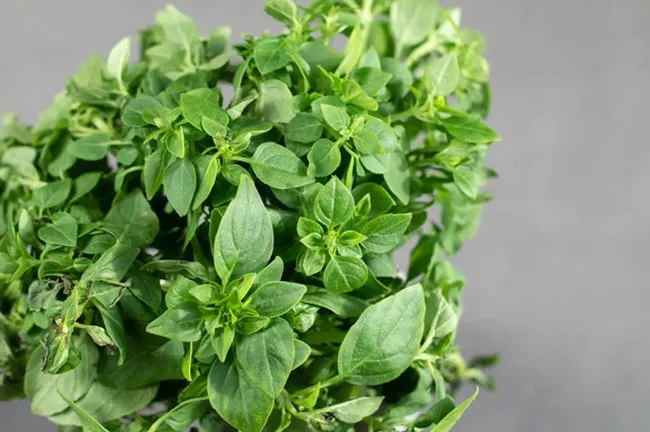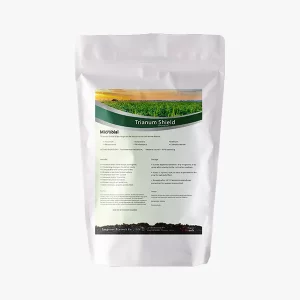Basil wilting is a common concern with this herb. There are several reasons why your basil leaves may be drooping. But before that, let’s start with the basics.
Sweet Basil or Basil leaf belongs to an annual mint family herb grown for its aromatic properties. This leaf is a sun-loving herb that is valued for its bright green foliage and different flavor.
Even though basil is an easy-going plant, it can develop droopy or wilted leaves that can reduce the plant’s life.
The annual herb is resistant to most diseases and pests but can be affected by Fusarium wilt, a fungal infection that causes stunted growth and limp, wilted, or yellow leaves. The wilted basil can eventually kill the plant if not cared for well. Hence, it becomes paramount to treat basil wilt to save the plant and ensure plenty of healthy foliage for later harvest.

A basil plant may wilt when its soil is too wet or too dry. Even though basil plants thrive in extreme heat, they require moist soil. Check the soil and reconsider how you water your basil if it is wilting or drooping.
People usually talk about basil downy mildew when discussing basil problems, but other diseases also need to be addressed. One basil disease found in the field this season is Fusarium wilt, caused by the fungus Fusarium oxysporum. Rot is usually caused by a water-borne disease that comes from bad irrigation or soil that can’t drain well. At this time, they begin to stunt and begin to wilt. The fusarium-wilt pathogen can infect a field and persist in soil for up to 12 years.
Root rot is yet another frequent cause of basil wilting. Rot is usually caused by a water-borne disease that comes from bad irrigation or soil that can’t drain well. It is essential to ensure that the soil doesn’t dry out completely between watering. Water your basil plants thoroughly, then allow them to drain completely before putting them back in their pots.
If you see brown spots soaked with water on your basil plant’s leaves, it may be suffering from a fungal disease.
Fusarium wilt can infect a field and persist in the soil for up to 12 years.
The best practices for managing basil include planting disease-free basil seeds. If you cannot find the tested seeds soak your seeds in water that is cold for four hours, then move the seed into a heat treatment that lasts for 20 minutes in 133 to 136 deg F water. The heat treatment results in a sticky layer forming on the outside of your seed, making it extremely slippery. This process will hinder germination.
 An effort was made to find a sustainable method to combat Fusarium plant/seed wilt with Trianum Shield, it is organic fungicide, contains Trichoderma harzianum as its active ingredient, which is an arbuscular mycorrhizal fungal (AMF). Trichoderma spp. is a filamentous group of fungi that promote plants’ growth and protect against harmful microbes, widely utilized as a biocontrol agent to control pathogens transmitted by soil.
An effort was made to find a sustainable method to combat Fusarium plant/seed wilt with Trianum Shield, it is organic fungicide, contains Trichoderma harzianum as its active ingredient, which is an arbuscular mycorrhizal fungal (AMF). Trichoderma spp. is a filamentous group of fungi that promote plants’ growth and protect against harmful microbes, widely utilized as a biocontrol agent to control pathogens transmitted by soil.
The indirect mechanism of mycoparasitism is based on competition for resources, the environment, antibiosis, and the plant immune system. This is in contrast to direct mechanisms, which are triggered by mycoparasitism itself.
Apart from direct interaction with pathogens in plants, Trianum fungicide are also known to cause resistance systemic in plants.
In the study conducted, the application of Trichoderma fungicide seed bio significantly increased the seed germination rate (22-48 percent) and decreased the time needed for the germination process (2.0-2.5 days). Moreover, In field trials, Trianum Shield reduced wilting disease incidence and intensity by 74-85 percent. The bioagents utilized during this research significantly reduced the likelihood of basil wilt in pots and field trials, and the combination of bioagents performed better than isolated treatments.
Fortunately, there are a few things you can do to prevent basil wilting. One of the best things to do is to use an organic micro-based solution, such as bacteria or fungi. These will help keep the plant healthy and hydrated.
Another option is to use disease control management techniques. This might involve using chemicals or other methods to kill off diseases that could be causing the problem.
Finally, you can also try pest control methods. This can be anything from using traps to deter critters from coming near your plants to using natural repellents like garlic or essential oils.
With a bit of trial and error, you should be able to find a method (or combination of methods) that works for you and keeps your basil plants happy and healthy.
Downy mildew cucumber is a serious disease. You must..
Bacterial leaf spot tomato are very dangerous and can..
Scientists call white mold in soyabeans as Sclerotinia sclerotiorum,..

Leave a Reply